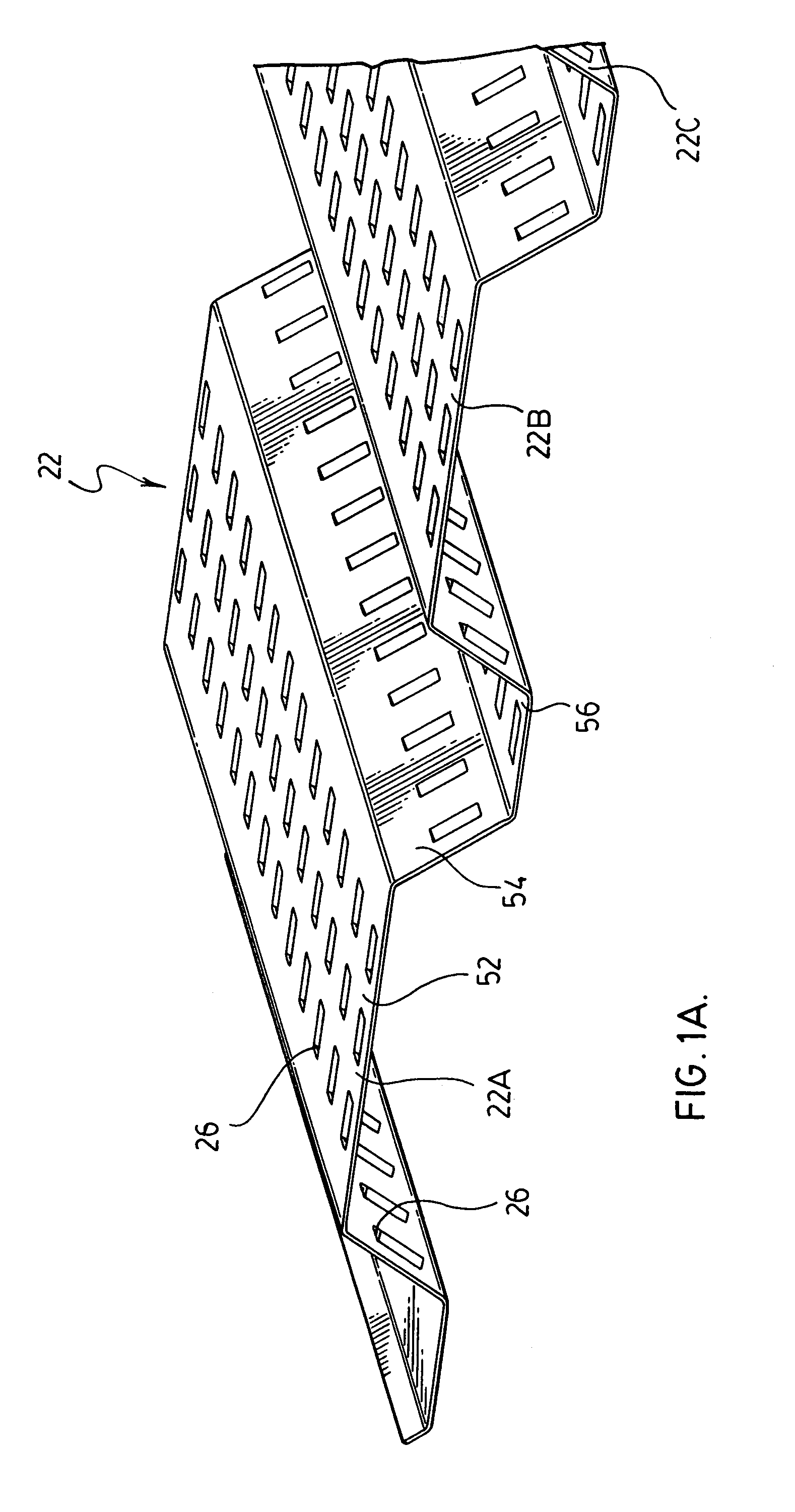Method and apparatus for preheating ventilation air for a building
a technology for ventilation air and buildings, applied in ventilation systems, lighting and heating apparatus, heating types, etc., can solve the problems of reducing the efficiency level of recirculating solar collectors, affecting the efficiency of solar collectors, and not controlling the amount of ventilation air, etc., to achieve the effect of increasing the surface area of solar collectors
- Summary
- Abstract
- Description
- Claims
- Application Information
AI Technical Summary
Benefits of technology
Problems solved by technology
Method used
Image
Examples
Embodiment Construction
[0023]Reference is first made to FIGS. 1 to 3 to describe a solar heating apparatus for pre-heating ventilation air for a building according an embodiment of the present invention, and indicated generally by the numeral 20. The apparatus 20 includes a first sunlight-absorbent collector panel 22 for locating on the building. The panel 22 is exposed to ambient air and defines a first air collection space 24 between itself and the building. The first sunlight-absorbent collector panel 22 has a plurality of air inlet openings 26 to allow the ambient air to pass through the openings 26 to the first air collection space 24. A second sunlight-absorbent collector panel 28 for locating on the building, adjacent the first sunlight-absorbent collector panel 22, defines a second air collection space 30 between itself and the building. The second sunlight-absorbent collector panel 28 has a plurality of air inlet openings 32 to allow air to pass through the openings 32 to the second air collectio...
PUM
 Login to View More
Login to View More Abstract
Description
Claims
Application Information
 Login to View More
Login to View More - R&D
- Intellectual Property
- Life Sciences
- Materials
- Tech Scout
- Unparalleled Data Quality
- Higher Quality Content
- 60% Fewer Hallucinations
Browse by: Latest US Patents, China's latest patents, Technical Efficacy Thesaurus, Application Domain, Technology Topic, Popular Technical Reports.
© 2025 PatSnap. All rights reserved.Legal|Privacy policy|Modern Slavery Act Transparency Statement|Sitemap|About US| Contact US: help@patsnap.com



